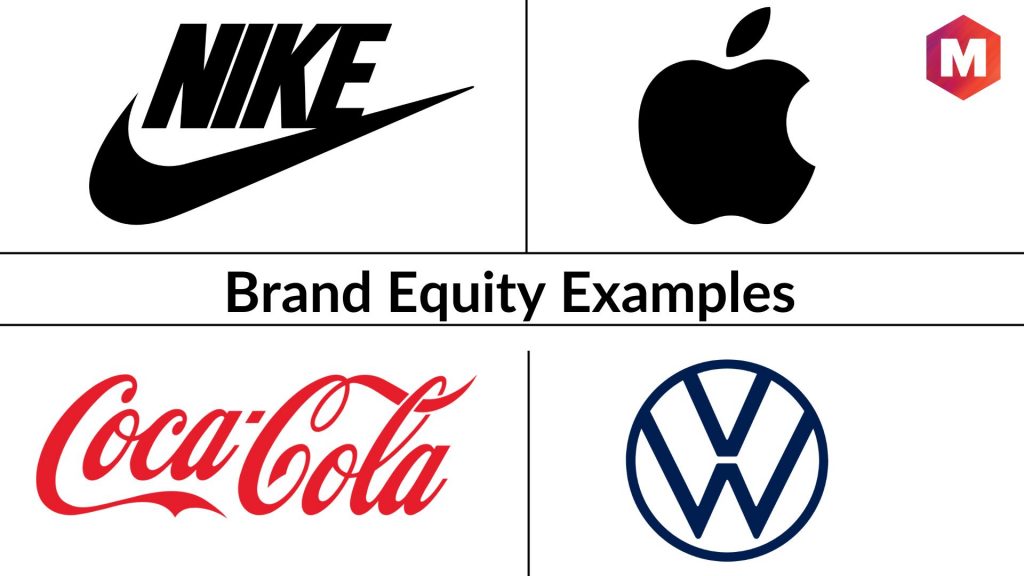Table of Contents
What is Brand Equity?
Brand equity is the brand-perceived value that a company has built up over time. This value is based on positive customer perceptions and associations that the company has created.
It encompasses all of the elements that make up a brand, including name, logo, identity, and reputation. All of these factors contribute to how customers perceive a brand, and ultimately how much they are willing to pay for its products or services.
A company’s brand equity is valuable because it can be associated with a product, making it more recognizable than a generic equivalent. For example, when you see golden arches, you know it’s McDonald’s. The value of this brand recognition is that it can lead to higher sales and profitability for the company.
It can be positive or negative, and it is created through customer perception and experience. Building brand equity is essential for any company that wants to create a strong, recognizable brand.
Positive brand equity means that customers have positive associations with a brand. They may feel that it is a high-quality brand or one that offers good value. Negative brand equity means that customers have negative associations with a brand. They may feel that it is a low-quality brand or one that offers poor value.
How to Manage Brand Equity?
To manage brand equity, companies need to focus on creating a strong and positive brand identity. This can be done through various elements of branding, such as – developing a strong and recognizable brand name, logo, and identity; ensuring that all communications reflect the brand in a positive light; and maintaining a consistent brand image across all channels.
However, to do all this, it is important to go through the following steps
A. Know all Elements of Brand Equity
1. Brand Awareness
It refers to how easily customers can recognize and remember your brand. Creating a strong and recognizable brand name, logo, and identity can help to increase brand awareness.
2. Brand Attributes
These are the features and benefits that customers associate with your brand. It is important to ensure that all communications reflect the brand in a positive light.
3. Perceived Quality
This is the degree to which customers believe that your brand offers high-quality products or services. Maintaining a consistent brand image across all channels can help to increase perceived quality.
4. Brand Loyalty
This is the tendency for customers to continue purchasing your brand’s products or services over time. Creating customer loyalty programs can help to increase brand loyalty.
5. Brand Value
This is the monetary worth of your brand, as determined by its sales, profits, and market share. Increasing brand value can be done by increasing sales and profits, and by expanding into new markets.
6. Brand Relevance
This is the degree to which your brand is relevant to customers’ needs and desires. It is important to ensure that your brand’s products or services are relevant to your target market.
7. Brand Differentiation
This is the degree to which your brand is unique from its competitors. It is important to ensure that your brand has a clear and distinct identity that sets it apart from its competitors.
B. Use the right Steps to Build Brand Equity
1. Designing Your Core Brand Values and Upholding Them
You should first develop a clear understanding of your company’s core values. These are the guiding principles that will help you make decisions about everything from your brand’s identity to its marketing strategy. Once you have defined your core values, it is important to uphold them in everything you do. This means being consistent in how you communicate your brand and making sure that your actions always align with your values.
2. Building Greater Awareness
The first step to managing brand equity is to increase brand awareness. This can be done through various elements of branding, such as developing a strong and recognizable brand name, logo, and identity; ensuring that all communications reflect the brand in a positive light, and maintaining a consistent brand image across all channels.
3. Creating Positive Brand Perception
It is not enough to just increase brand awareness, you also need to create a positive brand perception. This can be done by ensuring that all communications reflect the brand in a positive light and by maintaining a consistent brand image across all channels.
4. Communicating Brand Meaning & Fostering Positive Customer Feelings and Judgments
One of the most important aspects of managing brand equity is communicating the meaning of your brand to customers. This can be done through various marketing channels, such as advertising, public relations, and social media. It is also important to foster positive customer feelings and judgments by providing a great customer experience.
5. Building Strong Loyal Bonds and Continuously Improving Customer Experience
Another important aspect of managing brand equity is building strong loyalty bonds with customers. This can be done by creating customer loyalty programs and continuously improving the customer experience.
6. Having an Active and Engaged Community
Finally, it is important to have an active and engaged community around your brand. This can be done by creating a strong social media presence and by engaging with customers regularly.
C. Incorporate the best ways to maintain Brand Equity
1. Monitoring Brand Performance
The first step to maintaining brand equity is to monitor your brand’s performance. This can be done by tracking various brand metrics, such as brand awareness, brand perception, and brand loyalty.
2. Making Adjustments Based on Performance
Once you have monitored your brand’s performance, it is important to make adjustments based on what you have learned. This might involve changes to your brand’s identity, marketing strategy, or customer experience.
3. Staying Authentic while Gwoging & being Connected to your Audience
It is also important to stay authentic while growing your brand. This means being true to your core values and maintaining a close connection with your target audience. You may create a community of your audiences using Facebook Groups, Reddit Subreddits, Twitter Chats, Points and Awards Systems, Apps, Slack Groups, Correspondence for Special Dates, etc.
4. Having Quality Control Processes
It is important to have quality control processes in place to ensure that your brand always meets the highest standards. This might involve regular audits of your marketing materials, website, and customer experience.
5. Regularly Evaluating and Updating Your Strategy
Finally, it is important to regularly evaluate and update your brand equity management strategy. This will ensure that your strategy is always aligned with your brand’s goals and that you are taking advantage of new opportunities to improve your brand equity.
D. Know key Metrics to Measure Brand Equity:
Many different metrics can be used in your brand strategy for measuring brand equity. Some of the most important ones are-
1. Preference Metrics
- Customer Loyalty: This measures the percentage of customers who are loyal to your brand.
- Brand Awareness: This measures how many people are familiar with your brand.
- Brand Perception: This measures how people feel about your brand.
2. Financial Metrics
- Revenue per Customer: This measures how much revenue each customer brings in.
- Customer Lifetime Value: This measures how much revenue a customer is expected to bring in over their lifetime.
3. Strength Metrics
- Brand Equity Index: This measures the overall strength of your brand.
- Net Promoter Score: This measures how likely customers are to recommend your brand to others.
E. How to Increase Brand Equity
There are many different ways to increase brand equity. Some of the most important ones are-
1. Improving Brand Awareness
- Use paid advertising to reach new audiences.
- Implement search engine optimization (SEO) tactics to improve your visibility online.
- Get involved in social media and build relationships with influencers.
2. Improving Brand Perception
- Deliver excellent customer service to create a positive association with your brand.
- Create marketing campaigns that tell a story and connect with your audience on an emotional level.
- Regularly review your pricing to make sure it is in line with your brand image.
3. Improving Customer Loyalty
- Offer loyalty programs and rewards to encourage customers to keep coming back.
- Make it easy for customers to purchase your products or services online or in-store.
- Provide an outstanding customer experience at every touchpoint.
F. Learn from Brand Equity Examples
There are many different examples of brand equity. Five of the most famous ones are
1. Nike
Nike is one of the most valuable brands in the world. The company has built its brand equity by creating a strong emotional connection with its customers. Nike’s marketing campaigns are often inspirational and tell a story about overcoming adversity.
Its brand awareness is also very high, thanks to its use of effective advertising and sponsorship deals with high-profile athletes. Finally, Nike has excellent customer loyalty, due in part to its loyalty program and its reputation for delivering high-quality products.
2. Coca-Cola
Coca-Cola is another excellent example of brand equity. The company has one of the most recognizable brands in the world and enjoys high levels of brand awareness and customer loyalty.
Coca-Cola creates non-alcoholic drinks and prioritizes its consumers over customers. This has helped it to frequently develop new strategies that fit the desires of its consumers to maintain growth.
Key elements of Coca-Cola’s strong brand equity are its long history, its global reach, and its use of marketing to create an emotional connection with its customers. Its attention to people, portfolio, partners, planet, profit, productivity, etc has helped it to achieve excellent brand equity.
3. BMW
BMW is a German luxury car manufacturer with strong brand equity. The company has built its brand by creating a luxury image and delivering high-quality products. It also has a strong focus on customer service, which has helped to create a positive association with its brand.
BMW’s brand equity is also supported by its sponsorships of high-profile events such as the Olympics and Formula One. These sponsorship deals help to increase the visibility of the BMW brand and create a positive association with it.
4. Apple
Apple is one of the most valuable brands in the world and is known for its innovative products and sleek design. The company has built its brand equity by creating a strong emotional connection with its customers.
Apple’s marketing campaigns are often inspirational and tell a story about overcoming adversity. Its brand awareness is also very high, thanks to its use of effective advertising and sponsorship deals with high-profile athletes.
Finally, Apple has excellent customer loyalty, due in part to its loyalty program and its reputation for delivering high-quality products.
5. Amazon
e. Amazon is an eCommerce giant with strong and positive brand equity. The company has built its brand by offering a convenient and easy-to-use online shopping experience. It also has a wide range of products, which helps to attract and retain customers.
Amazon’s brand equity is also supported by its Prime membership program, which offers free shipping and other benefits to members. This program helps to create a strong sense of loyalty among Amazon’s customers.
These are just a few examples of brand equity. Many other brands have also built strong equity through emotional connections with their customers, high-quality products, and innovative marketing campaigns.
Conclusion
The takeaway for managing brand equity is to ensure that your brand is delivering on its promise and that customers have a positive association with your company. Maintaining a strong brand identity can help you weather the storm during tough times and come out ahead of the competition.
When it comes to managing brand equity, the key is to focus on delivering on your brand promise and ensuring that customers have a positive association with your company. By maintaining a strong brand identity, you’ll be able to weather the storm during tough times and come out ahead of the competition.
Now, what do you think? How will you go about managing brand equity for your company? Let us know in the comments below!
Liked this post? Check out the complete series on Branding


